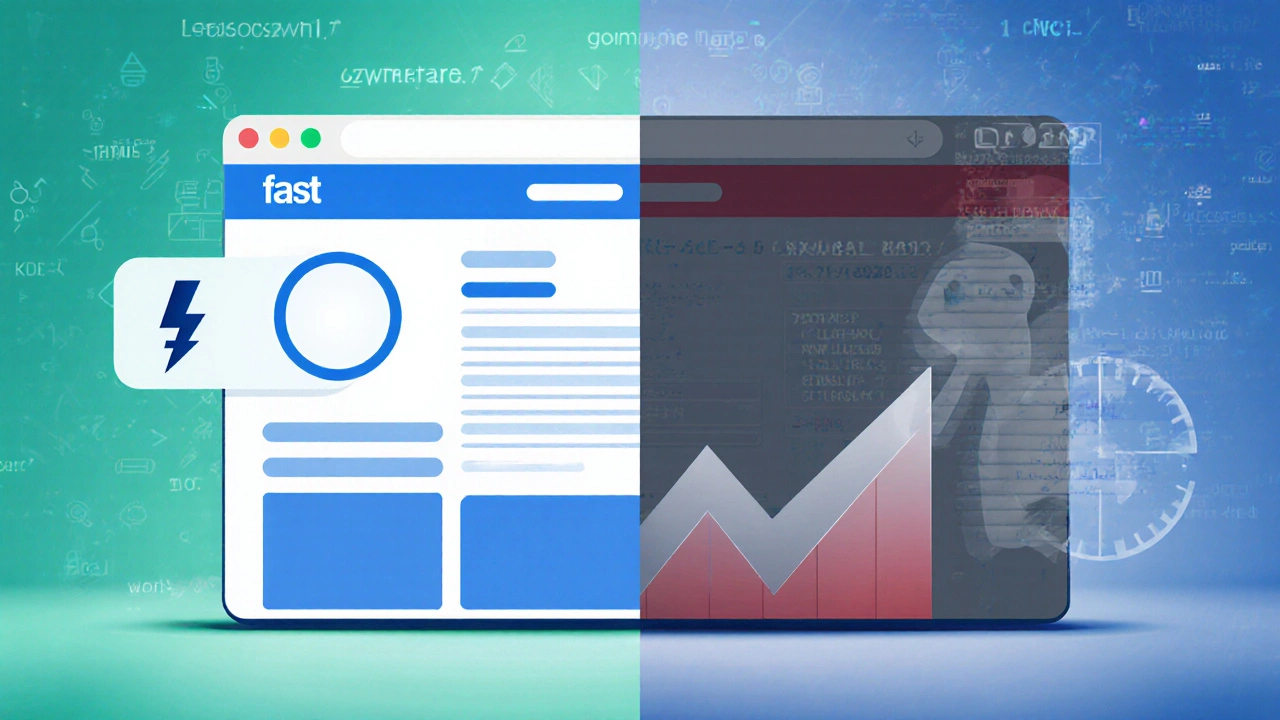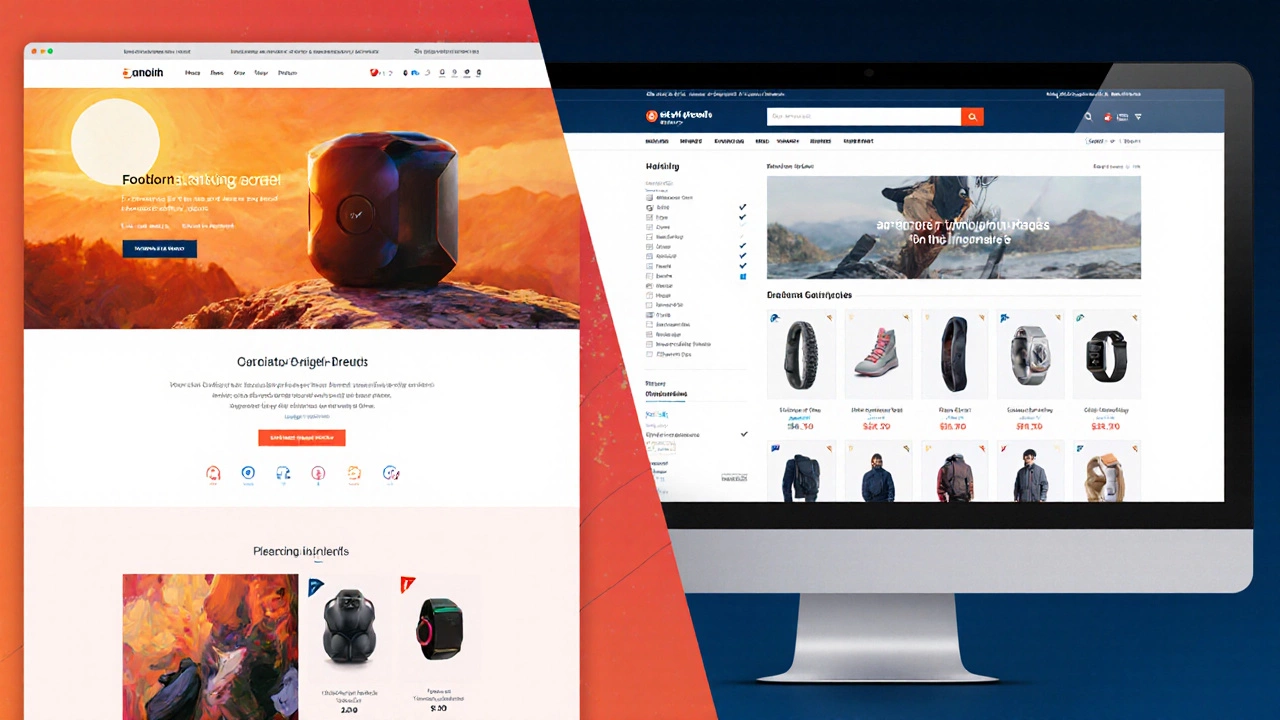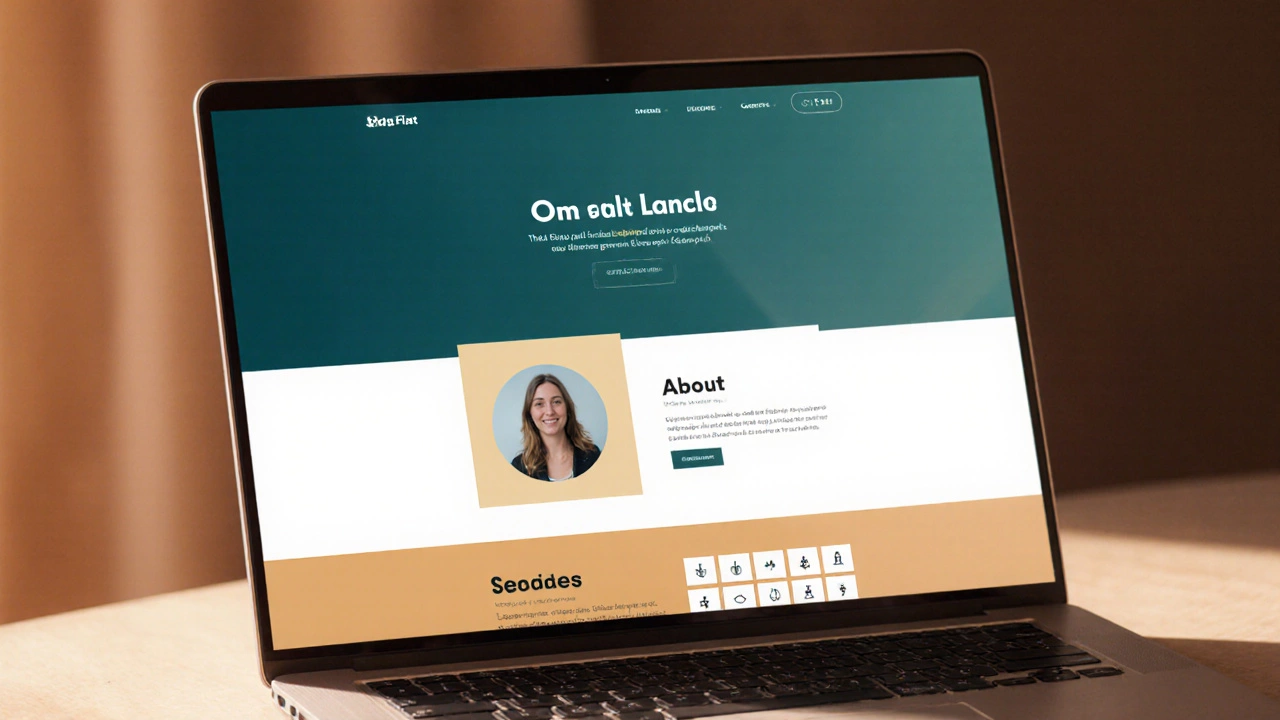One-Page Website Suitability Checker
How suitable is a one-page website for your project?
This tool helps you determine if a one-page website is the right choice for your specific needs by answering key questions from the article.
Results
Quick Takeaways
- A one-page website can boost conversions for simple offers.
- SEO gets tricky when you cram all content onto a single URL.
- Performance matters - a heavy page can kill bounce rates.
- Use a one‑page approach only when the story fits on one scroll.
- Consider a hybrid or multi‑page design for larger catalogs.
What is a One‑Page Website?
One-page website is a single‑URL site where all sections - home, about, services, contact - are stacked vertically and accessed by scrolling or anchor links. It eliminates traditional navigation menus and relies on smooth scrolling effects to move between content blocks.
When Does a One‑Page Site Shine?
For product launches, event promotions, portfolios, or any scenario where you can tell a concise story, a single scroll can guide the visitor straight to the call‑to‑action. The limited navigation reduces friction, which often translates into higher Conversion ratethe percentage of visitors who complete a desired action such as signing up, buying, or contacting. Because there’s only one page to load, users can focus on the message without getting lost in a maze of links.
Potential Pitfalls and When to Skip It
If your business offers dozens of products, a complex service menu, or needs to rank for many keywords, a one‑page layout can backfire. All content lives on a single URL, so you lose the ability to target specific search queries with dedicated pages. Search engines like Google Searchthe dominant web search platform that indexes and ranks billions of pages often favor sites with clear hierarchy and multiple pages for better topical relevance.
Moreover, as you pile more sections onto the page, Page load timethe duration a browser takes to download and render all resources on a page rises dramatically. A slow initial load can increase bounce rates and hurt SEO rankings.

SEO Implications: The Good, the Bad, and the Workarounds
Search Engine Optimization (SEO) thrives on keyword‑rich URLs, meta tags, and internal linking. With a one‑page site, you only have one set of meta tags, which limits those signals. However, you can still optimize by:
- Using descriptive
idattributes for each section and linking to them with fragment URLs (e.g.,#features). - Including structured data in each section to signal distinct content to search engines.
- Leveraging lazy loading for images and assets to keep the initial Page load time low.
- Creating a comprehensive sitemap that lists each fragment URL - some crawlers treat them as separate entries.
Even with these tricks, a single URL rarely outranks a well‑structured multi‑page site for a broad set of keywords.
Performance and User Experience
Speed is a make‑or‑break factor for one‑page designs. Because the browser downloads everything upfront, a heavy page can feel sluggish on mobile networks. To mitigate this:
- Compress images using modern formats like WebP.
- Minify CSS and JavaScript, and consider splitting scripts with
deferandasync. - Implement Responsive designa flexible layout approach that adapts content to different screen sizes and orientations so mobile users aren’t forced to scroll through giant desktop‑only assets.
- Adopt a Single-page application (SPA)a web app architecture that loads a single HTML document and updates content dynamically without full page reloads framework like Vue or React only if you need interactive features; otherwise, keep it static.
Design and Content Strategy: Making One Scroll Work
An effective one‑page site follows a narrative arc: hook, problem, solution, proof, and call‑to‑action. Each section should be visually distinct, using background colors, imagery, or spacing to signal progress. Navigation is usually a sticky header with anchor links, letting users jump directly to a section without scrolling.
If you need a Landing pagea dedicated, single-purpose page designed to capture leads or drive a specific user action, a one‑page layout works perfectly - you’re essentially extending a landing page with extra storytelling blocks.

One‑Page vs. Multi‑Page: Quick Comparison
| Aspect | One‑Page | Multi‑Page |
|---|---|---|
| SEO Targeting | Limited to one set of meta tags; relies on fragment URLs. | Each page can be optimized for specific keywords. |
| Load Speed | Initial load can be heavy; mitigated with lazy loading. | Pages load incrementally; generally faster per view. |
| User Journey | Linear scroll flow; good for storytelling. | Non‑linear navigation; suitable for complex info architecture. |
| Maintenance | Single file to update; easier for small sites. | Multiple files; more effort but better modularity. |
| Scalability | Not ideal for large catalogs or blogs. | Handles extensive content, categories, and archives. |
| Conversion Focus | High - fewer clicks to call‑to‑action. | Varies - can dilute focus across many pages. |
Hybrid Approaches and Alternatives
If you love the sleekness of a one‑page scroll but need deeper content, consider a hybrid model: a landing‑style one‑page homepage that links out to a lightweight Content Management System (CMS)software that lets you create, edit, and organize digital content without coding for the blog or product catalog. This keeps the hero experience fast while giving search engines more pages to index.
Another option is a Single-page application (SPA) built with React or Vue. SPAs load a core shell once, then fetch data as needed, delivering a fluid user experience without the full page reloads typical of multi‑page sites. However, SPAs need careful SEO handling (server‑side rendering or prerendering) to avoid invisible content for crawlers.
Decision Checklist: Should You Go One‑Page?
- Is your core message deliverable in under 2‑3 minutes of scroll?
- Do you rely on a single primary conversion goal (e.g., sign‑up, purchase)?
- Will you need to target many distinct keywords?
- Is your audience mostly mobile, and can you guarantee sub‑3‑second load?
- Do you have the design resources to craft engaging sections and clear visual hierarchy?
If you answered “yes” to most, a one‑page site is worth trying. If you need depth, multiple services, or extensive SEO, opt for a traditional multi‑page structure or a hybrid.
Mini FAQ
Can a one‑page website rank well for many keywords?
It can rank for a few focused terms, but because all content lives under one URL, you lose the granular on‑page optimization that separate pages provide. Use strategic headings, fragment URLs, and structured data to improve visibility.
How does page load time affect a one‑page site?
A slow initial load raises bounce rates and can lower rankings. Optimize images, minify assets, and lazy‑load below‑the‑fold content to keep the first‑paint under 2 seconds.
Is a one‑page design good for e‑commerce?
Usually not. E‑commerce sites need product pages, categories, filters, and reviews - all better suited to a multi‑page structure. A one‑page layout works only for a single product launch.
What tools help build a one‑page website?
Website builders like Webflow, Wix, and Squarespace offer one‑page templates. For developers, HTML5 with CSS Grid, a bit of JavaScript for smooth scrolling, or a lightweight framework like Alpine.js does the job.
Should I use a single‑page application (SPA) instead?
SPAs give dynamic interactivity but add complexity and SEO challenges. Choose an SPA only if you need real‑time updates, user dashboards, or heavy client‑side logic.






Written by Arjun Mitra
I am an IT consultant with a keen interest in writing about the evolution of websites and blogs in India. My focus is on how digital spaces are reshaping content creation and consumption. I aim to provide insights and strategies for those looking to thrive in the digital landscape.
All posts: Arjun Mitra